Can you imagine how thrilled Julian and Lincoln Barnwell, along with James ‘Tiny’ Little, must have been when they confirmed they had discovered The Gloucester shipwreck? It had run aground off Great Yarmouth in 1682.
I remember feeling excited when they announced the news last year as this was the most significant maritime discovery since the Mary Rose! Ever since then, I’ve been eagerly anticipating the chance to check out the Last Voyage of the Gloucester exhibition at Norwich Castle and learn more about this incredible piece of history.
Well, the wait is over, and the Last Voyage of the Gloucester exhibition at Norwich Castle is now open! In this review, we’ll take a closer look at what makes this exhibition so special and why it’s a must-see. Get ready to embark on an unforgettable journey through time and discover the fascinating story of The Gloucester.
Be sure to sign up for our email list here so we can keep you informed about other exhibitions like this and more happening around Norfolk.
*We were invited to the press preview to see the exhibition so that we could share our experience with our readers.
Note: This post contains affiliate links. As an Amazon Associate, we earn from qualifying purchases. Please see disclosure for more information.
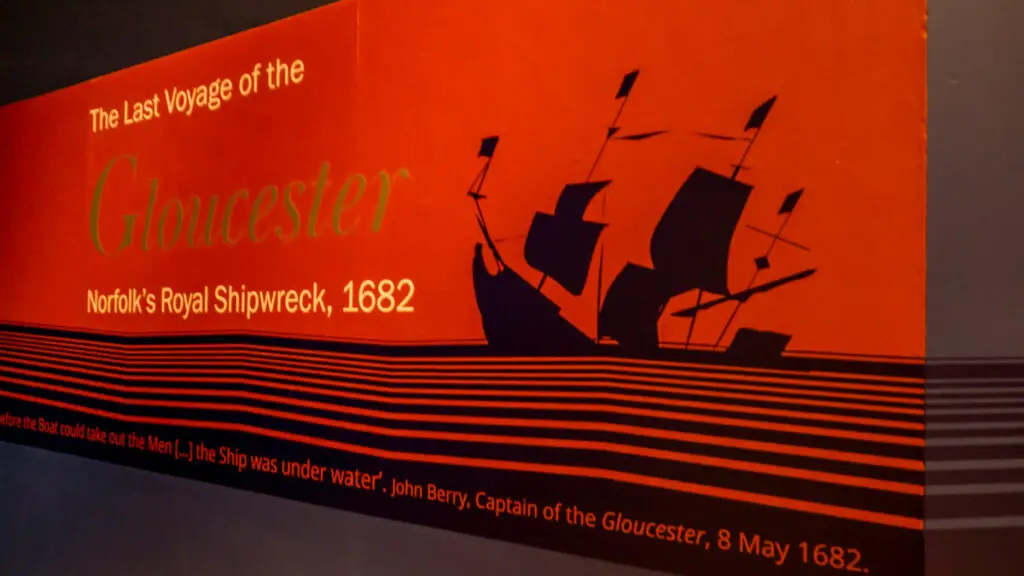
About the Gloucester
In the midst of heavy seas on May 6, 1682, a warship, the Gloucester, transporting the future King James II of England and VII of Scotland ran aground off the coast of Great Yarmouth. Tragically, the vessel sank within an hour, claiming an estimated 130 – 250 lives. For over three centuries, the remains of the ship and its precious cargo lay hidden beneath the seabed, until it was discovered by divers Julian Barnwell, Lincoln Barnwell, and James ‘Tiny’ Little in 2007.
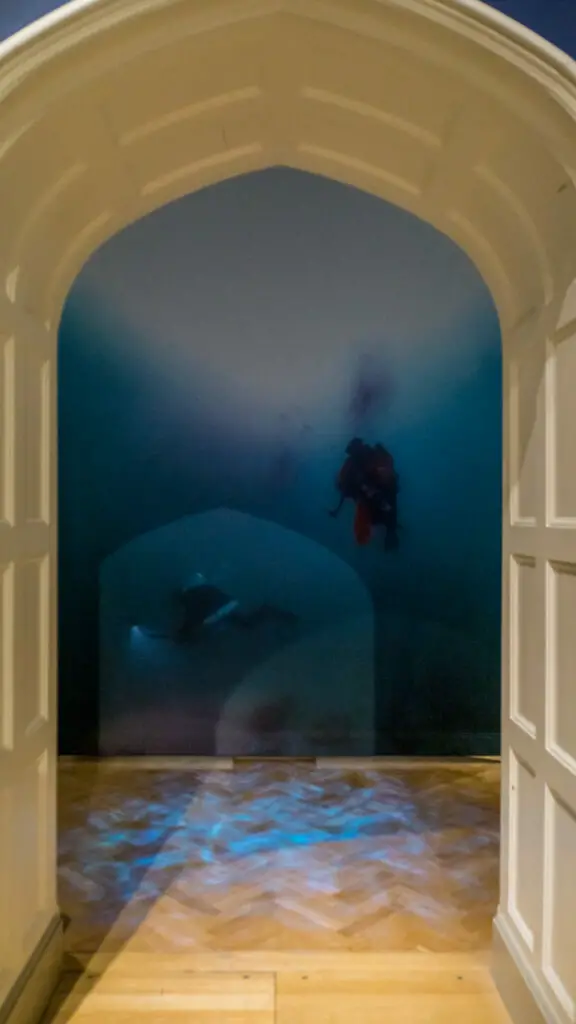
After confirming their discovery in 2012, the team has been working to be able to share the ship’s remarkable story with the world. Collaborating with the relevant authorities, they have taken great care in safeguarding the finds and ensuring their future preservation. The creation of a dedicated charity, Gloucester 1682, aims to raise funds and secure a permanent home for the artefacts, hopefully in Norfolk.
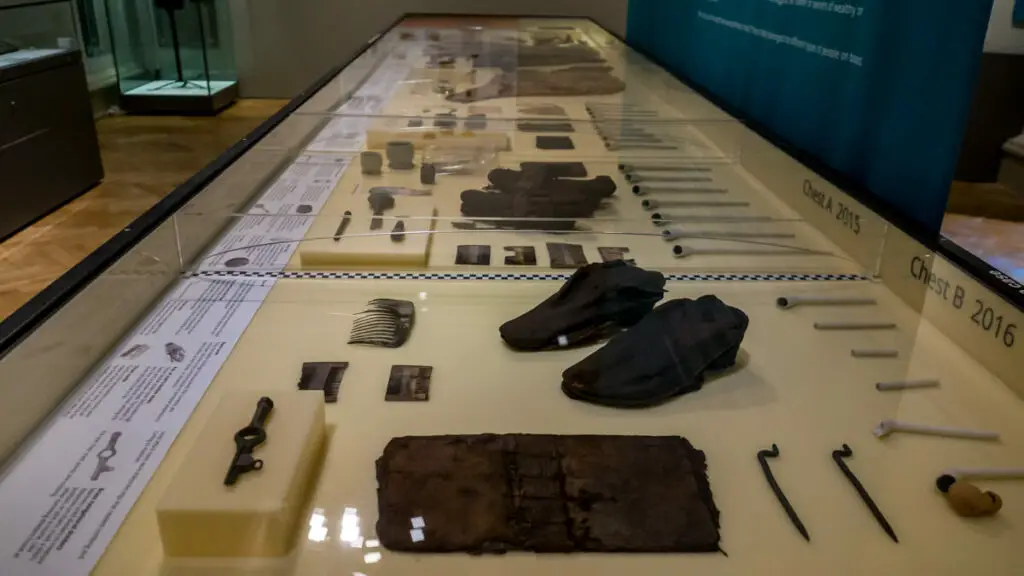
What to Expect at The Last Voyage of the Gloucester
When you enter the Last Voyage of the Gloucester exhibition, it’s like stepping back in time. You will become immersed in the ship’s gripping tale wanting to know who to blame for the tragedy.
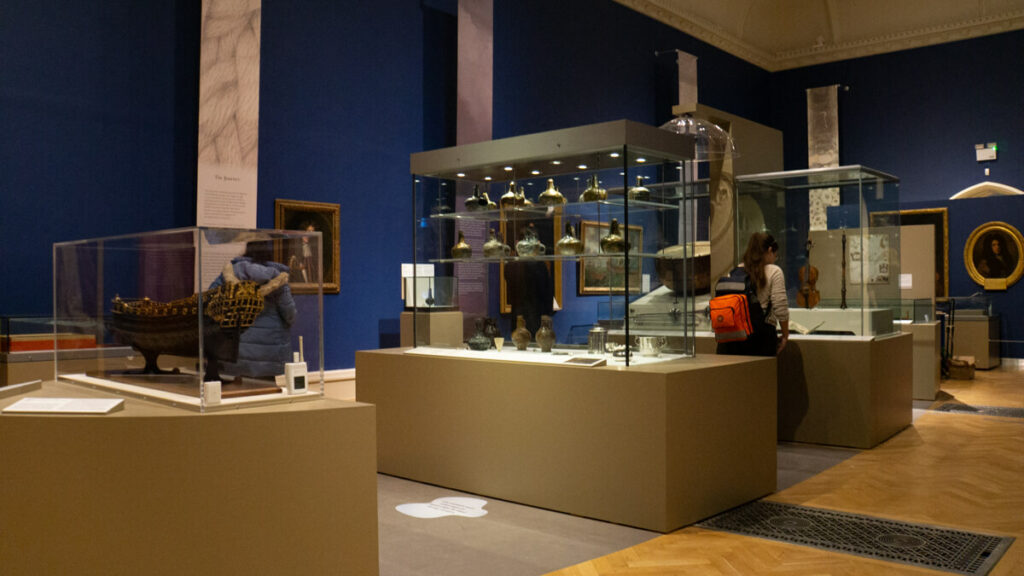
The first thing you see is the bell that played a crucial role in confirming the shipwreck found was the Gloucester. The bell’s distinctive 1681 mark which you can see towards the top provided the evidence needed to confirm the ship’s identity. As you gaze upon this key artefact, you can’t help but imagine the countless times it was rung to signal the watch, reminding the crew of their duty and responsibility.
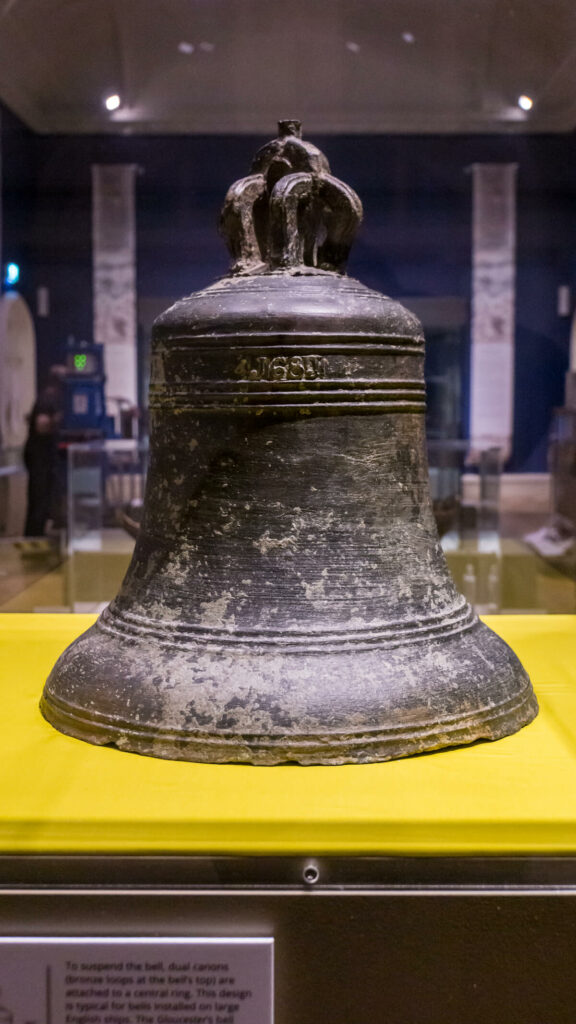
Near the bell, you can spot some of the earliest items recovered by the team, such as a distinct onion-shaped broken glass bottle and a “frogless” brick (one without an indentation for the manufacturer’s stamp). At the time, the team didn’t know these items were from the Gloucester, but their 17th-century origin gave a clue about the ship’s age and history.
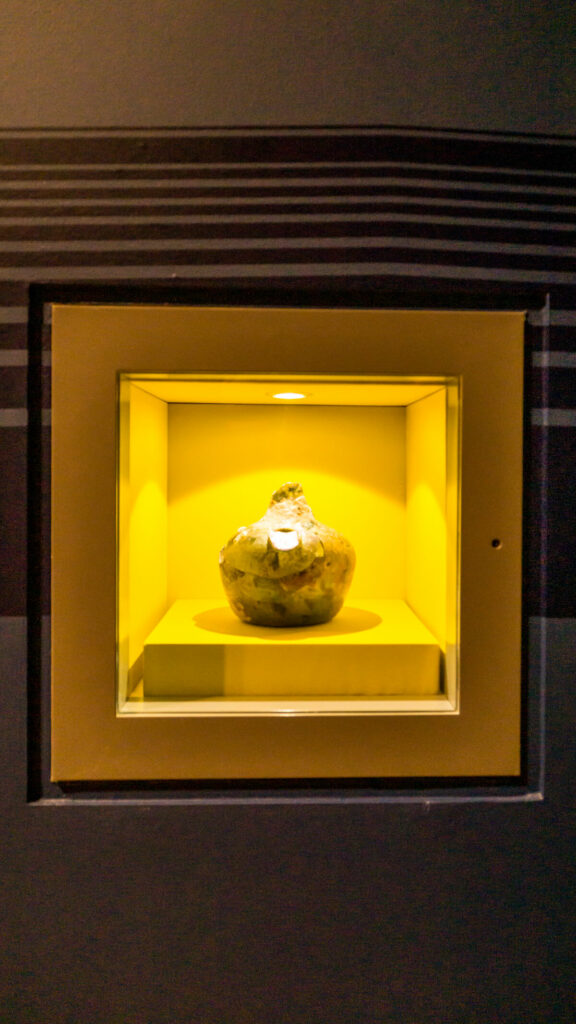
To better understand the historical significance of the Gloucester, the exhibition explains the political climate of the time. James, the presumptive heir to Charles II, was a Roman Catholic, so many Protestants were not happy about that.
To avoid further controversy, James, who was Duke of York at the time, relocated to Scotland. However, when things quieted down, he was invited back to court. It was on May 4, 1682, that James set sail on the Gloucester to retrieve his wife and daughter in Edinburgh.
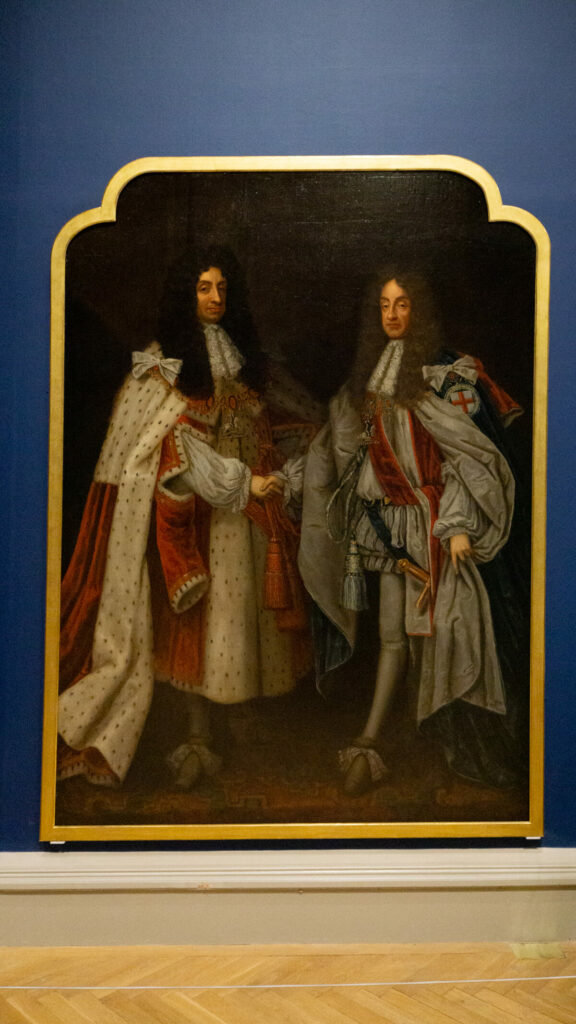
As you continue through the exhibition, you’ll get a glimpse of what life would have been like on board the Gloucester with the future king onboard. You’ll see musical instruments from the 17th century, and with the push of a button, you can hear snippets of the songs that might have been played on the ship. In addition, the discovery of numerous wine bottles, still corked with their contents inside, suggests that the passengers on the ship had plenty of celebrations planned.
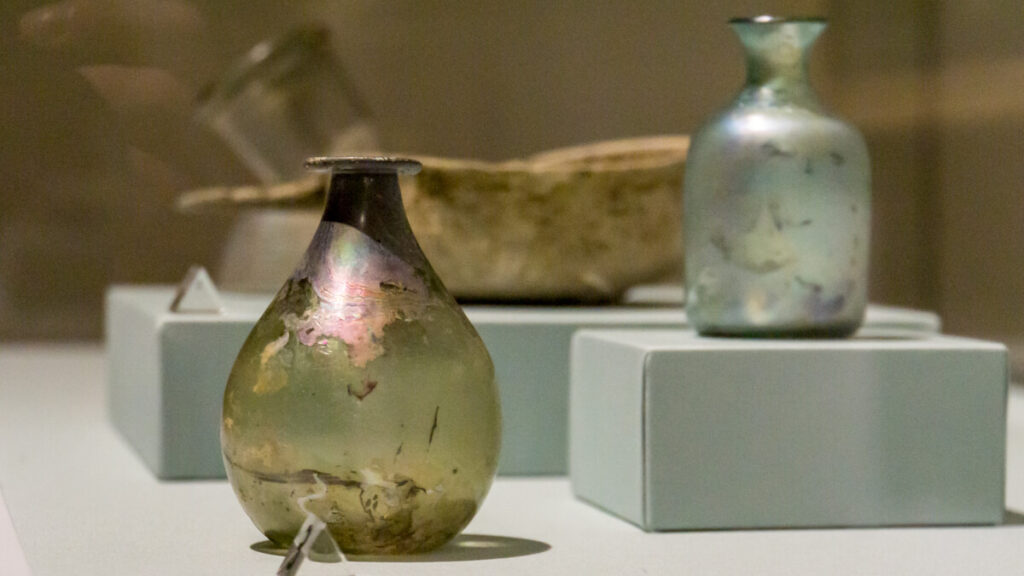
Moving on, the exhibition reveals that there was a dispute over the ship’s route, with the future king (who was also the former Lord High Admiral) ultimately getting his way. This disagreement may have played a role in the vessel’s tragic fate. Don’t miss the fun animated video that dramatizes the scene and then you can vote for the person you think is to blame.
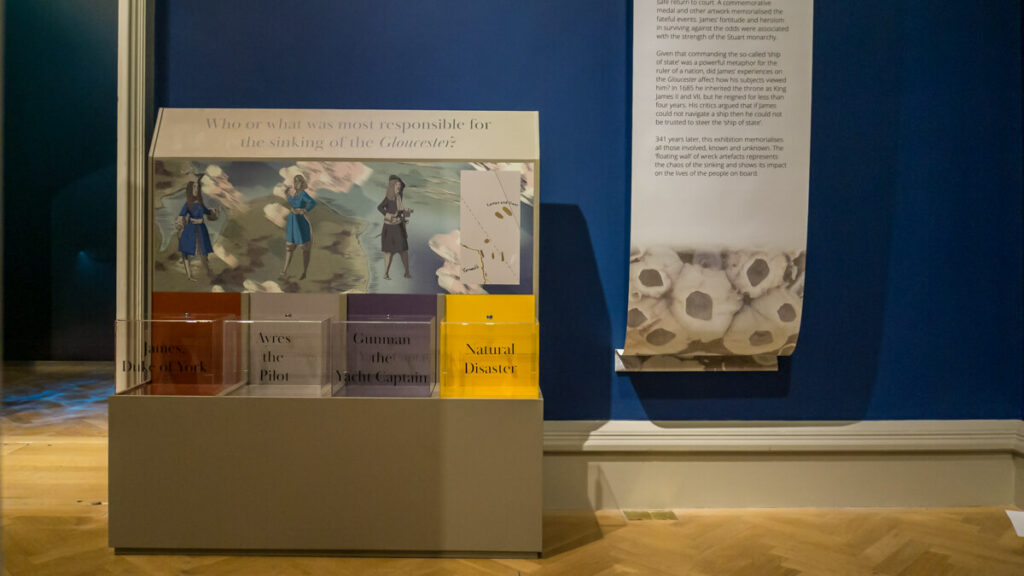
It is important to remember that the story of what happened to the Gloucester, why and who was to blame, is at its heart, a human tragedy. The exhibition covers this clearly and respectfully. Nobody knows the number of people that perished that day, but it is believed to be between 120 and 250.
A particularly poignant display is the ‘floating wall’ of artifacts, which serves as a reminder of the chaos and loss of life that occurred during the ship’s sinking. It’s worth noting that more lives might have been saved if James had acted more decisively, but he hesitated, believing the ship could still be saved.
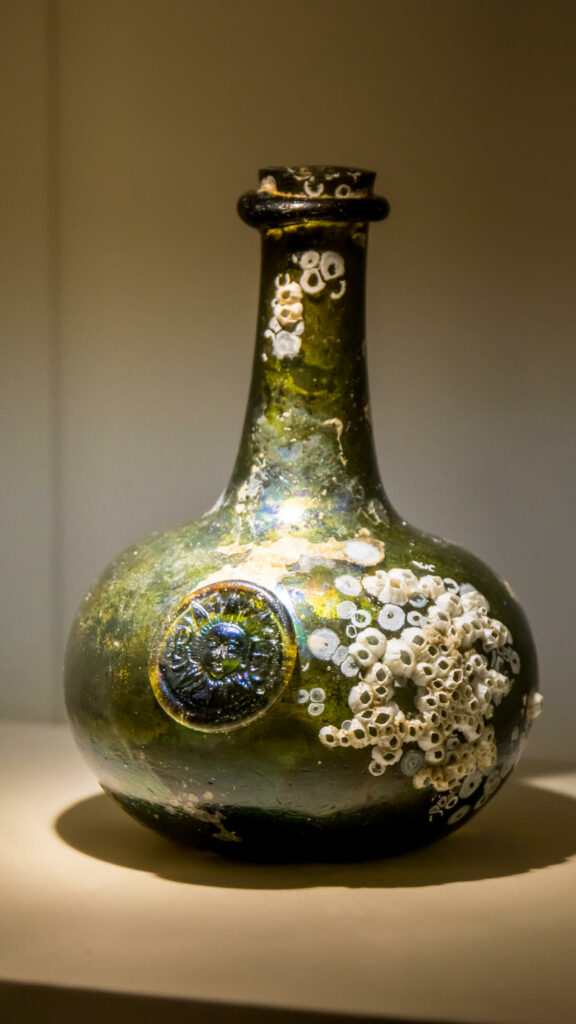
The next section provides deeper insights into the discovery of the wreck and features more artefacts from the Gloucester. You can go on a virtual dive tour of the Gloucester wreck site and watch a short documentary video. There is also a timeline, beginning from the commissioning of the Gloucester in 1652 and spanning to February 2023 when this exhibition opened.
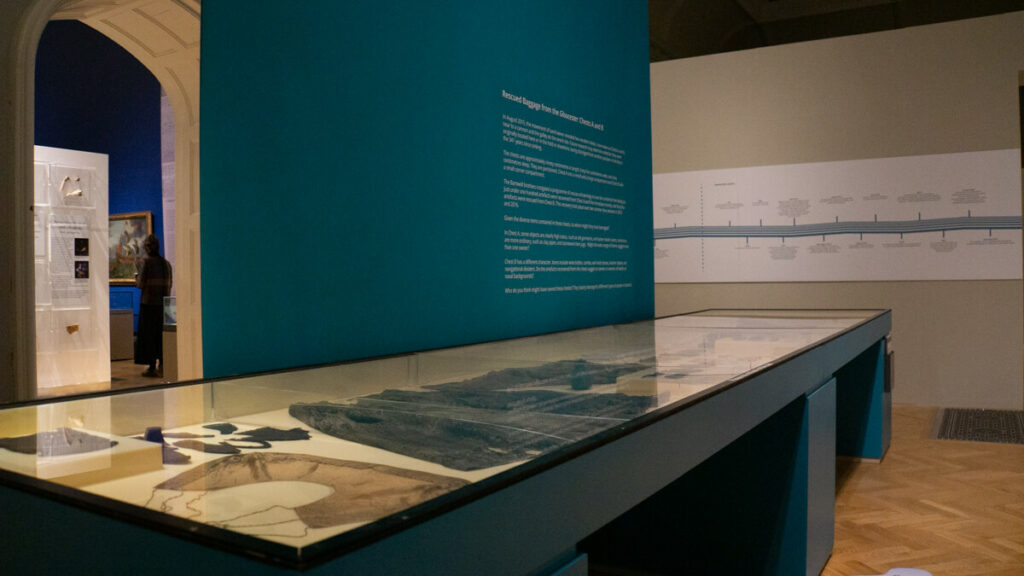
A large display case showcases various items recovered from two chests, providing more insight into the lives of those on board the Gloucester. You can inspect the objects including pipes, combs, shoes, hairpins, spectacles, spoons, an inkwell, a leather book cover, and more.
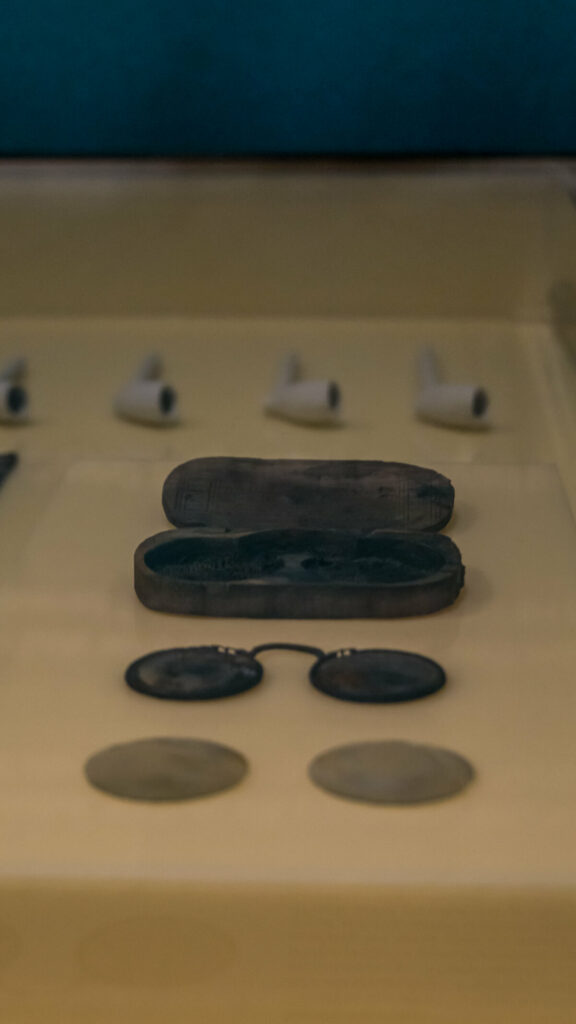
For me, these are the real showpieces of this exhibition – the personal possessions that provide a real connection to the people aboard ship. Somebody wore those shoes and spectacles. Someone used those pins. It’s awe-inspiring to see how these items have managed to maintain their form and character despite spending more than three centuries submerged in the sea.
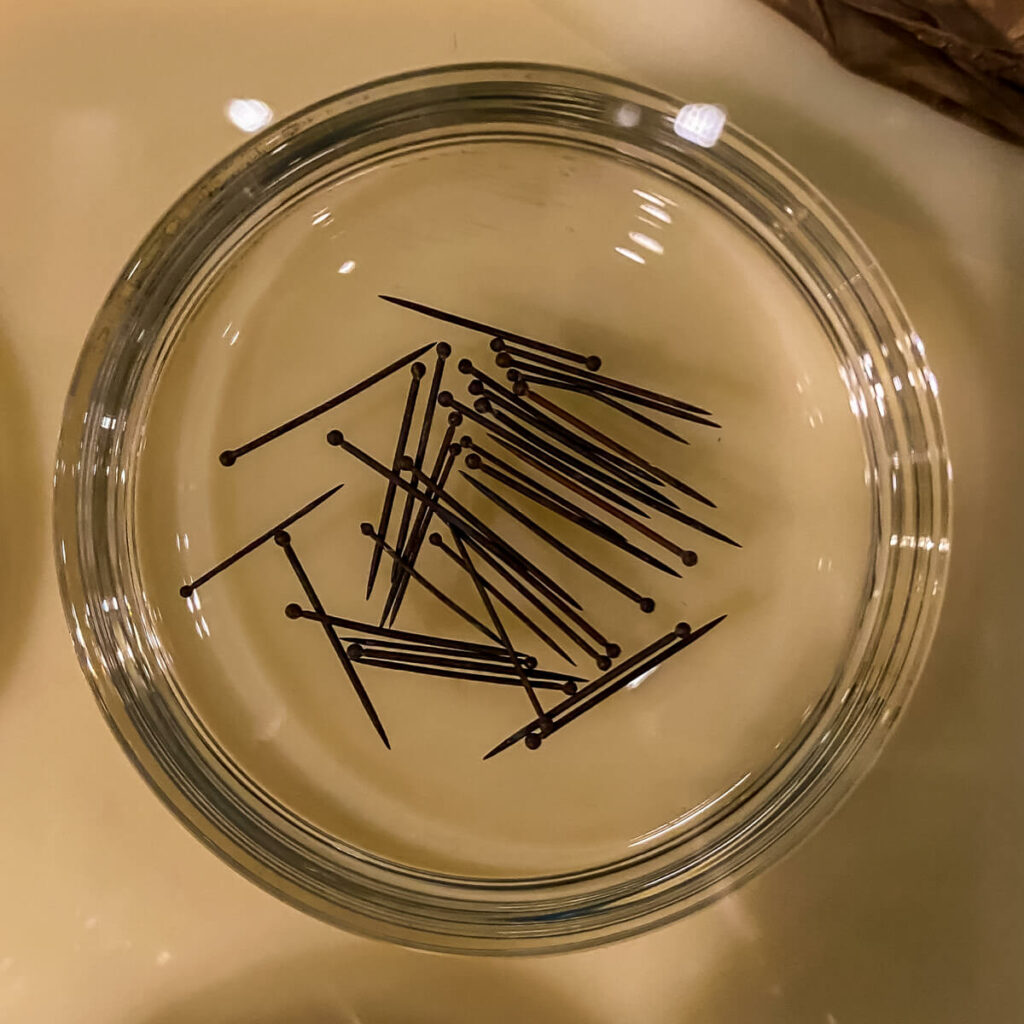
After leaving the exhibition, the thoughts provoked by the tragic events of the Gloucester’s last voyage will continue to linger. You will wonder whether the tragedy could have been prevented, if James should have been held accountable, and how the disaster impacted his image as a ruler.
Certain critics argued that if James could not safely navigate a ship, how could he be trusted to govern a nation. Ultimately, his reign lasted less than four years, leaving a lasting legacy of doubt and speculation.
Review of the The Voyage of the Gloucester Exhibition
The Gloucester’s remarkable story truly comes to life in this exhibition. With a wealth of historical artifacts and expertly curated displays that provide historical context and insight into what it was like aboard the ill-fated ship, it does justice to the incredible tale.
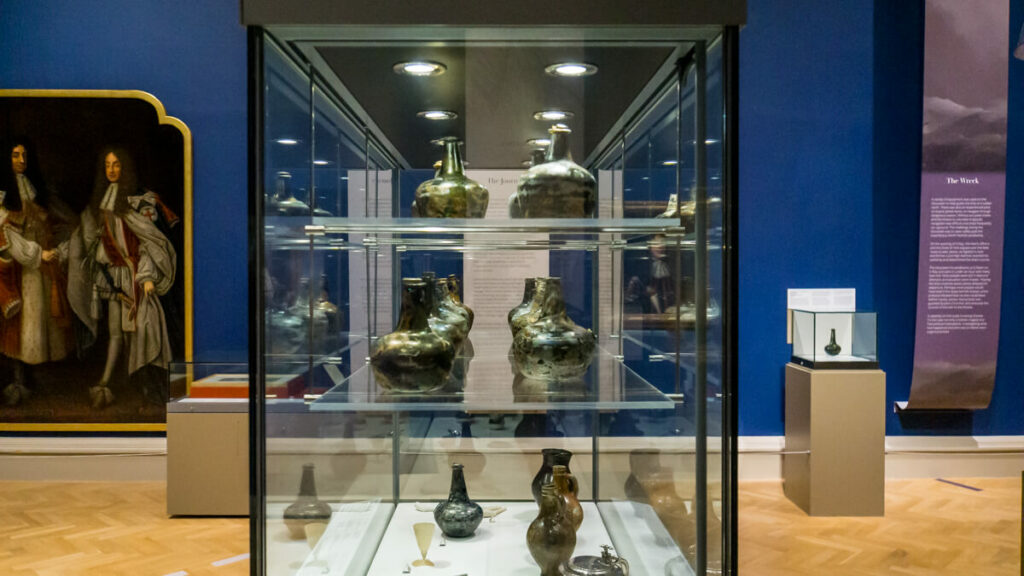
One of the most thought-provoking parts of the exhibition is the insight into what may have led to the tragic fate of the Gloucester. The curators present their own theory about who is to blame, but they also invite you to form your own opinions. I was convinced by the case the curators presented and will always wonder how history would have changed if he had been held to account.
You can’t help but be amazed at the condition of the artifacts on display at Last Voyage of the Gloucester, many of which have never been seen by the public before. Despite spending over 300 years on the sea floor, these items have somehow been preserved.
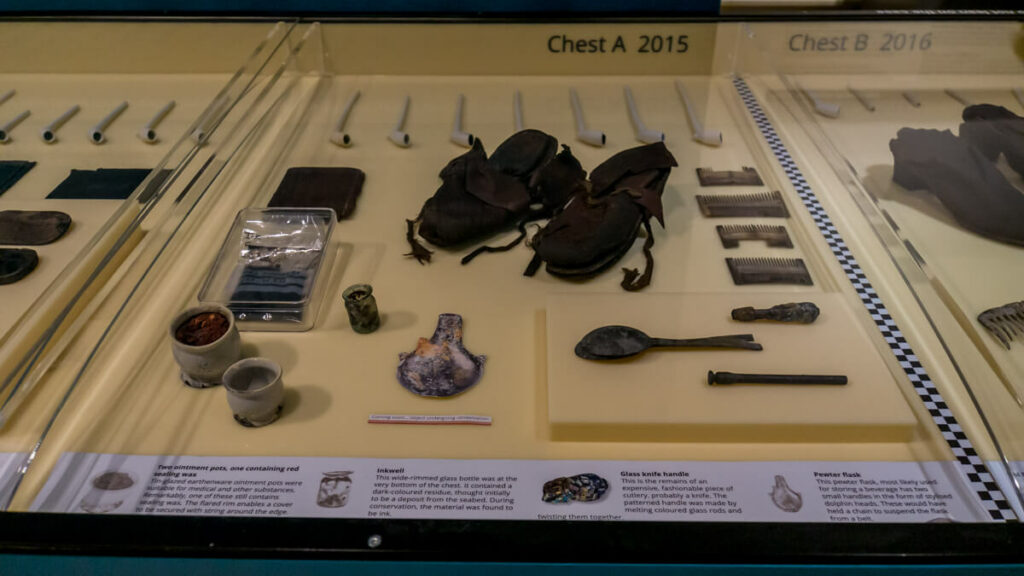
Don’t miss your opportunity to see these treasures up close. With the collection currently without a permanent home, who knows when, if or where these treasures will be on public display next.
It’s wonderful that this special exhibition is included with admission to Norwich Castle (which is reduced for the time being because the Castle Keep is closed). It’s a fantastic opportunity for visitors to see the remarkable artifacts and gain insight into the story of the Gloucester. I strongly encourage everyone to take advantage of this opportunity while they can.
More Things to Do in Norwich
If you have travelled to Norwich to see the Gloucester exhibition, you might as well make a day out of it! In addition to this captivating exhibition, there are plenty of other attractions in Norwich to explore. You can find more inspiration in these blog posts.
Best Things to Do in Norwich with Kids
Best Things to Do in Norwich When it Rains
Fun Things to Do in Norwich for Adults
Unusual Things to Do in Norwich
The Last Voyage of the Gloucester Exhibition FAQs
The exhibition took place from 25 February – 10 September 2023.
It is free with admission to Norwich Castle. Admission to Norwich Castle is £7 for adults and £6 for kids ages 4-18. There are discounts for adults accompanying a child aged 4-18. Under fours and Norfolk Museum members are free.
You are encouraged to purchase tickets in advance as the exhibition is expected to be popular.
I would allow 90 minutes to 2 hours. You might also want allow to extra time to see some of the other galleries at Norwich Castle while you are there. Note that the Castle Keep is currently closed while the Royal Palace Reborn project is ongoing.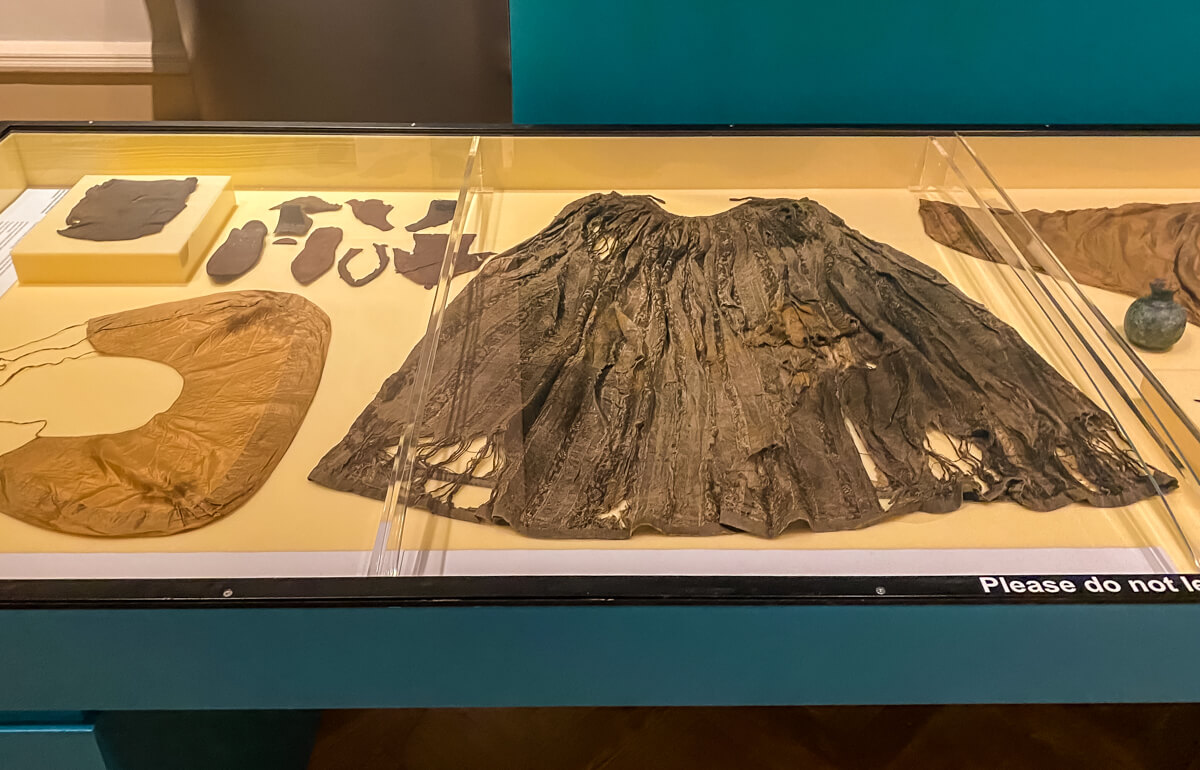
Yes. I think kids will find the story of the Gloucester interesting and parts of the exhibition are interactive to keep the kids engaged.
Norwich Castle is located on Castle Mound in Norwich. Many buses stop at Castle Meadow which is right next to the Castle. If you take the train to Norwich, it is about a 10 minute walk.
There is no dedicated parking for Norwich Castle, but don’t worry there are still options nearby. The closest car parks are Castle Mall and Rose Lane.
Since Norwich Castle is in the middle of Norwich, there are several excellent hotels within a short walk. Our top choice for a place to stay in Norwich City centre is the Assembly House, but if you are looking for something more budget-friendly the Premier Inn Duke Street is a good option too.
Disclosure: This post contains affiliate links. This means we will receive a small commission for some purchases made using links in our blog with no additional cost to you. Please be assured we would not promote any product unless we believe that our readers will also benefit. The commission does not influence the editorial content of this site.

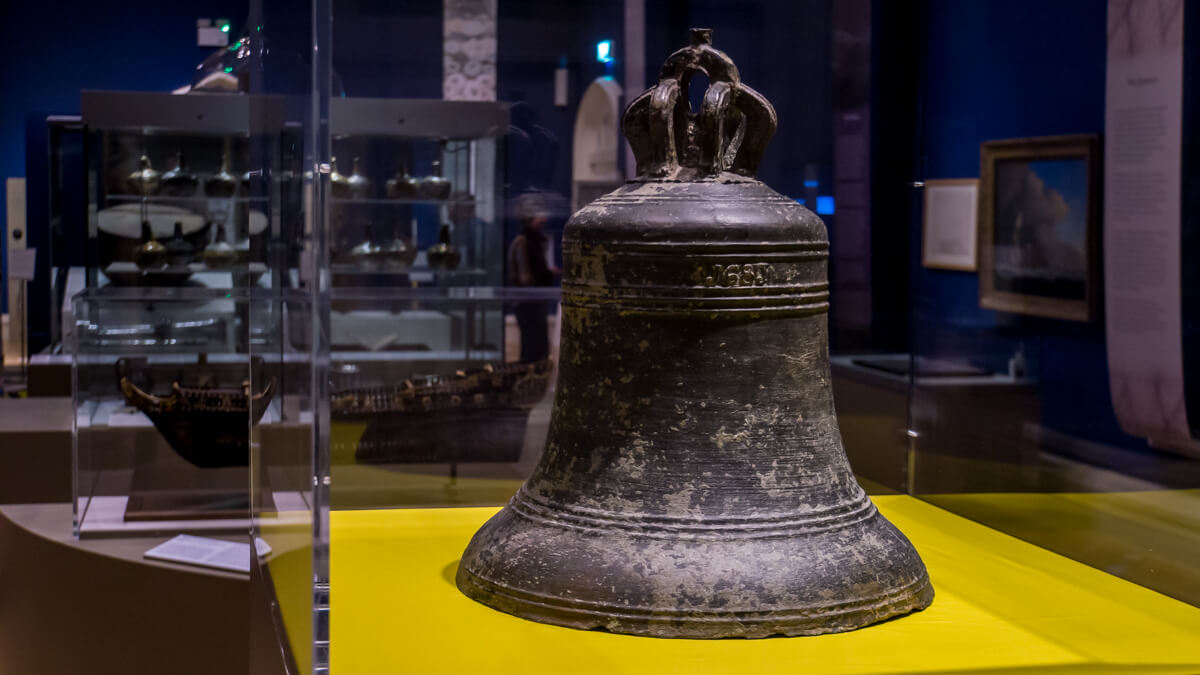
I should visit Norfolk this summer between 1-st and 8-th of June. I am intrested in Museums, Cathedrals, Castles.
I prepare my visit now reading everything about Norfolk. The article about the Gloucester was helpful and very interesting.
Thank you
Mihaela – Glad to hear you will be coming to Norfolk. I’m sure you will have an amazing time.